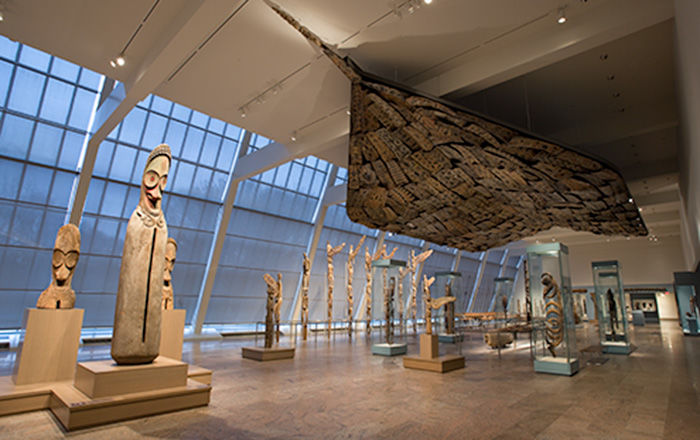Mpíru (flute)
Carved from a single piece of wood, this flute is conceived as a stylized human figure with sharply bent arms. Small perforations at the tips of those arms serve as finger holes: while blowing into the V-shaped mouthpiece, the player covers or uncovers these holes to shift between the instrument’s available pitches. Leather bindings reinforce cracks caused by frequent handling and the humid savanna climate.
The playing of mpíru punctuates Nuna funerals, initiation rites, and harvest festivals with bright, penetrating calls. They are generally performed by small ensembles of musicians with each flute producing a single pitch. By interlocking their notes, they weave melodies that echo the tonal contours of Bwa speech and address ancestral spirits. Hunters travel with smaller versions that they use for making crisp notes as field signals.
Sandro Capo Chichi, Research Associate, Arts of Africa, 2025
This image cannot be enlarged, viewed at full screen, or downloaded.
This artwork is meant to be viewed from right to left. Scroll left to view more.




